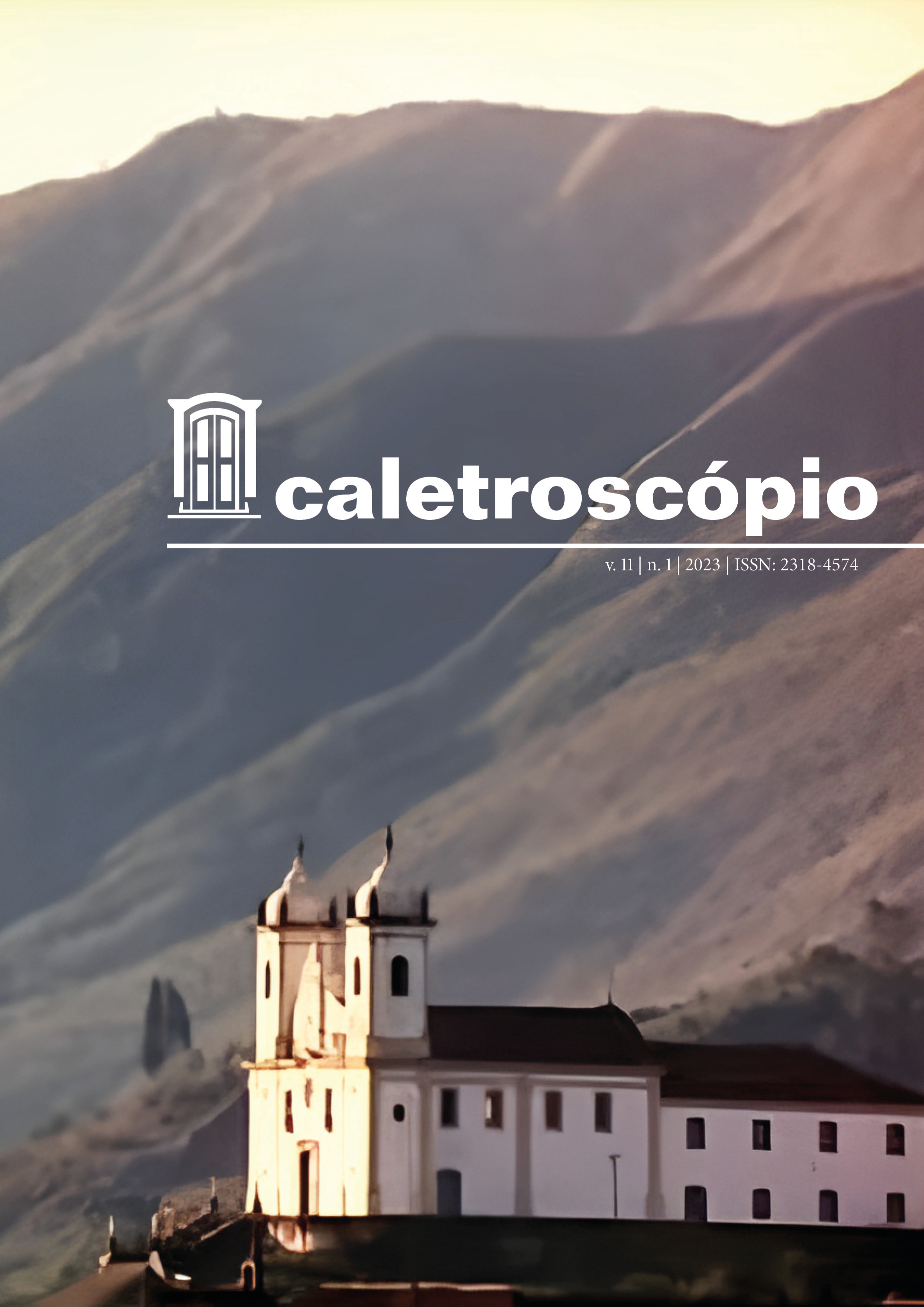Cuban insistences
neo-picaresque in O Rei de Havana
Abstract
This article aims to analyze traces of picaresque literature in the novel O Rei de Havana (1999), by Cuban writer Pedro Juan Gutiérrez. However, it is intended to point out not only the similarities but also the differences and updates that the Spanish picaresque model suffers in relation to the contemporary material. Such differences would be what critics, such as Professor Mario González, began to consider “neo-picaresque”. The Spanish picaro had specific social conditions of its time and space, and these conditions find a certain similarity with the social and historical context of the character Reinaldo, from the aforementioned novel, but also distinctions. Among similarities and differences, the presence of the picaro in contemporary literature is neither a surprise nor an exclusivity of Pedro Juan Gutiérrez’s work. The studies by José Antonio Maravall also provide a theoretical framework so that the similarities and differences between picaros and neo-picaros are perceived and analyzed with due care.
Downloads
References
ANDRADE, Mário de. Macunaíma. 2. Ed. Rio de Janeiro: José Olympio, 2022.
CARPENTIER, Alejo. A literatura do maravilhoso. Trad. Rubia Prates Goldoni e Sérgio Molina. São
Paulo: Editora Revista dos Tribunais, 1987.
CARVALHO NETO, Paulo de. Meu tio Atahualpa. Porto Alegre: Mercado Aberto, 1985.
CERVANTES SAAVEDRA, Miguel de. Novelas Exemplares. Trad. Darly Nicolana Scornnaienchi. São
Paulo: Abril Cultural, 1983.
BELLINI, Giuseppe. Nueva historia de la literatura hispanoamericana. Castalia: Madrid, 1997.
CHIAMPI, Irlemar. Barroco y Modernidad. México D.F.: Fondo de Cultura Económica, 2001.
D´ORS, Eugenio. Lo Barroco. Madrid: Tecnos, 1993.
GONZÁLEZ, Mario Miguel. O Romance Picaresco. São Paulo: Ática, 1988.
GUTIÉRREZ, Pedro Juan. Nosso GG em Havana. Trad. Paulina Wacht e Ari Roitman. Rio de Janeiro:
Objetiva, 2008.
GUTIÉRREZ, Pedro Juan. O Rei de Havana. Trad. José Rubens Siqueira. São Paulo: Alfaguara, 2017.
JONES, Royston Oscar. Historia de la Literatura Española. Siglo de Oro: prosa y poesía (siglos XVI y
XVII). Barcelona: Editorial Ariel, 1992.
KAFKA, Franz. O Processo. Trad. Syomara Cajado. São Paulo: Nova Época Editorial, 1963.
Lazarilho de Tormes. Edição de Medina del Campo, 1554. 2. ed. Organização, edição do texto em espanhol, notas e estudo crítico de Mario M. González. Tradução de Heloísa Costa Milton e Antonio
R. Esteves. Revisão da tradução de Valeria de Marco. São Paulo: Editora 34, 2012 (1ª reimp. 2018).
MARAVALL, José Antonio. Sociedad y literatura picaresca en el Barroco español. Madrid: Taurus, 1986.
MARAVALL, José Antonio. Sociedad y literatura picaresca en el Barroco español. Conferencias de José
Antonio Maravall. 1982, p. 35-40 (Conferencias de José Antonio Maravall – arquivo publicado pela
Fundação Juan March).
MÁRQUEZ, Gabriel García. Cem Anos de Solidão. Trad. Eliane Zagury. 48. ed. São Paulo/Rio de Janeiro: Record, 2018.
MÁRQUEZ, Gabriel García. Do amor e outros demônios. Trad. Moacir Werneck de Castro. 3. ed. Rio de
Janeiro: Record, 1994.
SANT´ANNA, Affonso Romano de. Barroco: do quadrado à elipse. Rio de Janeiro: Rocco, 2000.
SARDUY, Severo. Escrito sobre um corpo. Trad. Lígia Chiappini Moraes Leite e Lúcia Teixeira Wisnik.
São Paulo: Perspectiva, 1979.
SARDUY, Severo. El barroco y el neobarroco. In: MORENO, César Fernández. América Latina en su
literatura. Siglo XXI; UNESCO, 1972, p. 168-188.
SOUZA, Márcio. Galvez, imperador do Acre. Rio de Janeiro: Record, 2022.
SUASSUNA, Ariano. A pedra do reino. 16. ed. Rio de Janeiro: Nova Fronteira, 2017.
Copyright (c) 2023 Caletroscópio

This work is licensed under a Creative Commons Attribution-NonCommercial-NoDerivatives 4.0 International License.
The publication Caletroscopio shall retain for a period of three years all authorial rights for works accepted for publication: articles, reviews, translations, etc. Outside this restriction, these works are licenced through Licença Creative Commons-Atribuição-NãoComercial-SemDerivações 4.0 Internacional.
Upon expiry of this period, in the event that the author publishes the text, even when making alterations to the original, we would ask authors to include as a footnote, the information that a previous version of the article was published in the Revista Caletroscópio, citing the appropriate references.


